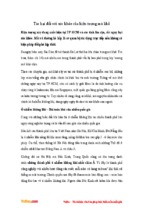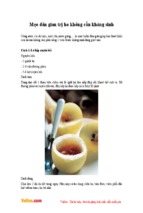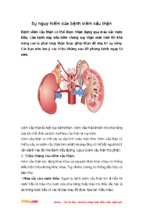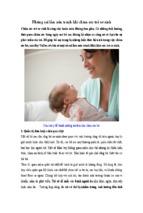INTERNATIONAL ESSENTIALS
OF
HEALTH CARE QUALITY
AND
PATIENT SAFETY™
Hospital Edition
Joint Commission International
www.jointcommissioninternational.org
Joint Commission International
A division of Joint Commission Resources, Inc.
The mission of Joint Commission International (JCI) is to improve the safety and quality of
care in the international community through the provision of education, publications,
consultation, and evaluations services.
JCI is a division of Joint Commission Resources (JCR), the not-for-profit affiliate of The
Joint Commission. For more than 50 years, the Joint Commission and its predecessor
organization have been dedicated to improving the quality and safety of health care services.
As the largest accreditor of health care organizations in the United States, the Joint
Commission surveys over 17,000 health care programs through a voluntary accreditation
process.
The Joint Commission and its affiliate are both not-for-profit corporations.
© 2010 Joint Commission International
All rights reserved. No part of this publication may be reproduced in any form or by any
means without written permission from the publisher.
Contact Us
For more information about Joint Commission International, please visit
http://www.jointcommissioninternational.org.
For more information about Joint Commission Resources, please visit
http://www.jcrinc.com.
Copyright 2010 Joint Commission International
1
INTERNATIONAL ESSENTIALS
OF
HEALTH CARE QUALITY AND PATIENT SAFETY™
INTRODUCTION
Health care organizations around the world are called on to provide high-quality, safe patient
care despite inadequate equipment or financial, human, and other resources. Most health
care organizations are frequently aware of what they need to do to provide quality, safe
patient care; however, they may lack the leadership, staff knowledge, or organizational
structures necessary to begin the quality journey. Organizations may simply do not know
where to start or do not know which interventions will have the greatest effect on quality
and patient safety.
Ministries of health, health authorities, and other governmental agencies committed to
providing safe, quality health care often need objective information to guide strategic and
financial decisions to improve the safety and quality of the services provided to the public.
These bodies often do not have the tools to gather and analyze the level of risk in health care
organizations in an incisive manner that will permit the strategic direction of resources to
improve quality and safety. Likewise, health care purchasers and insurance companies often
do not have the data they need to make choices that direct patients to lower-risk health care
delivery settings.
The International Essentials of Health Care Quality and Patient Safety Framework was designed by
Joint Commission International (JCI) for the creation of tools and strategies that address
these diverse needs by demonstrating how to identify risks to quality and safety in an
individual health care organization or in a national health care delivery system. The
framework can be adapted to individual organization needs as well as to national priorities,
with the results from using the tools valuable for process improvement, public policy,
recognition of risk-reduction achievement in health care organizations, awarding of
contracts, and other purposes. JCI developed the International Essentials of Health Care Quality
and Safety Framework to provide nonaccreditation-related strategies to a wider segment of
health care organizations and public health systems in pursuit of JCI’s mission to improve
the safety and quality of health care provided to the public. The framework also
complements other JCI quality and patient safety tools, education, and knowledge-transfer
strategies.
PROGRAM FRAMEWORK
This document identifies five “Focus Areas” associated with patient care, quality and safety,
from which to focus initial quality and safety improvement efforts are initiated. These five
Focus Areas were developed from an extensive international literature search on health care
quality and safety. Criteria for each Focus Area provide clear and achievable risk-reduction
strategies. “Levels of Effort” are identified for each criterion to provide a means for
evaluating progress in reducing risk and improving quality.
This document covers the following information:
Copyright 2010 Joint Commission International
2
•
•
•
The five Focus Areas associated with patient care, quality and safety are widely
recognized as the major domains toward which risk-reduction strategies should be
directed
The Criteria that represent 10 risk-reduction strategies for that domain
The Levels of Effort that represent progressive achievement in reaching the
expectations found in a Criterion
o At Level 0, the desired activity is absent, or there is mostly ad hoc activity
related to risk reduction.
o At Level 1, the structure of more uniform risk-reduction activity begins to
emerge.
o At Level 2, the processes are in place for consistent and effective riskreduction activities.
o At Level 3, there are data to confirm successful risk-reduction strategies and
continued improvement.
FRAMEWORK—SPECIAL CONSIDERATIONS
Use of the tools and strategies derived from this framework will measurably improve the
quality and safety of health care in individual organizations and health systems. It is
important to note that the following:
• Although the tools derived from the framework will help to identify and reduce
quality and safety risks to patients and staff in an individual organization or health
care system, risk will not be totally eliminated. The framework was designed to
identify the most significant quality and safety areas, not all possible areas. Use of the
tools begins an organizations risk reduction strategy however much work remains to
be done even when an organization does well in this first quality and safety analysis
process.
• Successful use of the tools and strategies derived from this framework is not a
substitute for full facility accreditation. The 50 criteria represent a small fraction of
the total number of expectations that must be met during the Joint Commission
International accreditation process.
Copyright 2010 Joint Commission International
3
INTERNATIONAL ESSENTIALS OF HEALTH CARE QUALITY AND
PATIENT SAFETY (HOSPITAL ESSENTIALS)
Focus Areas
Focus
Area►
Criteria
▼
1
2
1
2
3
4
5
Leadership
Process and
Accountability
Competent and
Capable
Workforce
Clinical Care of
Patients
Improvement
of Quality and
Safety
Leadership
responsibilities and
accountabilities
identified
Leadership for
quality and safety
Personnel files
and job
descriptions for
all staff
Review of
credentials of
physicians
Review of
credentials of
nurses
Safe
Environment
for Staff and
Patients
Regular
inspection of
buildings
3
Collaborative
management
4
Oversight of
contracts
5
Integration of
quality and risk
management
6
Control of
hazardous
materials
Fire safety
program
Review of
credentials of
other health
professionals
Staff orientation
to their jobs
Biomedical
equipment safety
Compliance with
laws and
regulations
Oversight of
students and
those in training
7
Commitment to
patient and family
rights
Training in
resuscitative
techniques
8
Policies and
procedures for
care of high-risk
patients
Staff education
on infection
prevention and
control
9
Oversight of
human subject
research
10
Organ
procurement,
donation, and
transplantation
Communication
among those
caring for the
patient
Staff health and
safety program
Coordination of
infection
prevention and
control program
Reduction of
health care–
associated
infections (hand
hygiene)
Barrier
techniques are
used (gloves,
masks, and so
on).
Proper disposal
of sharps and
needles
Stable water and
electricity
sources
Proper disposal
of infectious
medical waste
Correct patient
identification
There is an
adverse event
reporting system.
Informed
consent
Adverse events
are analyzed.
Medical and
nursing
assessments for
all patients
Laboratory
services are
available and
reliable.
Diagnostic
imaging services
are available,
safe, and reliable.
Planned and
provided care is
written.
High-risk
processes and
high-risk patients
are monitored.
Patient
satisfaction is
monitored.
Anesthesia and
sedation are used
appropriately.
Surgical services
are appropriate
to patient needs.
Clinical
guidelines and
pathways are
available and
used.
Staff understand
how to improve
processes.
Medication use
is safely
managed.
Clinical
outcomes are
monitored.
Patients are
educated to
participate in
their care.
Communicating
quality and safety
information to
staff
Copyright 2010 Joint Commission International
4
Staff satisfaction
is monitored.
There is a
complaint
process.
FOCUS AREAS
FOCUS AREA 1: LEADERSHIP PROCESS AND
ACCOUNTABILITY
Experience around the world has shown that in large and small health care organizations, in
general and specialty care facilities, in rural and urban settings, and in public and private
settings, the most essential factor in improving quality and patient safety is leadership
support at the highest level of the organization. Strong leadership is necessary to create and
sustain an organizational culture that supports quality care delivered safely. Leadership for
quality can come from many places within the organization such as a governing body, the
chief executive officer or senior manager, and physician, nursing, and allied health
professionals. This leadership can also come from multiple sources outside the organization
such as ministries of health, private health care associations, and corporate offices of health
care systems. Identifying and affirming the leadership for quality and confirming leaders’
commitment to champion a quality organization make this the first and most essential Focus
Area.
CRITERION 1: Leadership responsibilities and accountabilities are identified.
The leadership structure of the organization is identified in an organizational table or other
written document that identifies each leader’s responsibilities on which he or she will be
evaluated.
SAFETY AND QUALITY LINK
The basis of any quality organization is a clear understanding of which leaders are
responsible for setting the mission, plans, and policies of the organization, and how the
oversight of daily operations is managed. This level of transparency makes for clear lines of
authority and accountability and is fundamental to an organizational culture of quality.
Resource decisions needed to advance quality and safety are made at this level.
LEVELS OF EFFORT
Level 0: The leadership structure is unclear or not identified.
Level 1: There is a written, up-to-date document that identifies accountable leaders by name,
position, and responsibilities.
Level 2: The individuals are carrying out their responsibilities.
Level 3: How the individuals carry out their responsibilities has been evaluated, and
measures have been taken to continuously improve the results of their efforts.
Copyright 2010 Joint Commission International
5
CRITERION 2: Leadership for quality and patient safety
The individuals accountable for patient care quality and the safety of patients and staff are
clearly identified by name, position title, and responsibilities in an up-to-date organizational
table or other written document. The leaders are educated about quality and are actively
involved in setting quality and safety priorities.
SAFETY AND QUALITY LINK
Clear and consistent leadership from the most senior leaders of the organization is necessary
for a culture of quality and safety. Without clear leadership, a culture of quality will not
develop, and quality and patient safety will not be viewed as an organizational priority.
LEVELS OF EFFORT
Level 0: The leaders for quality and patient safety have not been identified.
Level 1: The quality and patient safety leaders within and outside the organization are
identified.
Level 2: These leaders are educated about quality.
Level 3: The leaders, at least annually, set the priorities for quality improvement in the
organization.
CRITERION 3: Collaboration and cooperation at all levels
The leaders and managers of the organization, including department, unit, and/or service
leaders, select a mechanism to collaborate and set policies and procedures that support
quality and patient safety and cooperation on a daily basis. These leaders and managers
report annually to senior leadership on quality and patient safety activities.
SAFETY AND QUALITY LINK
A key to improving quality and safety is to understand that systems must change for
improvements to last. Because systems (for example, patient assessment systems, medication
use systems) cut across many divisions and units of an organization, the leaders must
recognize the need to break down operational silos and to cooperate and collaborate on a
daily basis to achieve quality objectives.
LEVELS OF EFFORT
Level 0: The leaders and managers do not have a mechanism to collaborate on quality and
patient safety.
Level 1: The leaders and managers create or agree on an organizational structure or other
mechanism that fosters collaboration and cooperation.
Level 2: The leaders and managers use that structure to set quality and patient safety
strategies, policies, and plans.
Level 3: The leaders and managers produce an annual report to senior leadership on quality
and patient safety activities and results in the organization.
Copyright 2010 Joint Commission International
6
CRITERION 4: Quality requirements in clinical and managerial contracts
Quality considerations are a part of all contracts and agreements for clinical or support
services from sources outside the health care organization. The contracts are managed with
transparency and renewed based on quality requirements.
SAFETY AND QUALITY LINK
Health care organizations frequently arrange for clinical or support services from outside
sources. These may range from clinical laboratory services to equipment maintenance or
food service management. Because these services can often influence the quality and safety
of services, there is a clear process to approve all contracts or agreements and to include
quality requirements.
LEVELS OF EFFORT
Level 0: There is no clear and collaborative process for managing contracts with outside
sources of services.
Level 1: There is a mechanism for negotiating or approving all contracts.
Level 2: When appropriate, the contract includes quality requirements.
Level 3: Contracts are renewed only when the quality requirements are met.
CRITERION 5: Quality, patient safety, and risk management are integrated.
The organization integrates all quality and risk-management activities to increase the
efficiency and effectiveness of measurement and improvement activities. The integration
considers data collection, analysis, and improvement.
SAFETY AND QUALITY LINK
As an organization’s quality programs increase in number and scope over time, they might
become separately and independently managed, with separate databases and overlapping
priorities. This can fragment and undermine the effectiveness of the quality and patient
safety program. Thus, it is best to integrate all clinical quality, facility safety, risk
management, and other similar programs to coordinate approaches, use resources wisely,
and provide to management a composite picture of quality and patient safety in the
organization.
LEVELS OF EFFORT
Level 0: The organization does not address one or more of the following functions: quality
improvement, risk management, patient safety, clinical outcomes, or facility safety.
Level 1: There is no apparent integration or communication between the quality and patient
safety units of the organization.
Level 2: Quality and patient safety units are integrated and coordinated, and data collection
and analysis processes are integrated when appropriate and possible.
Level 3: Improvements that are implemented have considered quality, safety, and risk
management implications.
Copyright 2010 Joint Commission International
7
CRITERION 6: Compliance with laws and regulations
Designated individuals in the organization are responsible for making the organization aware
of applicable laws and regulations and ensuring that the organization complies with all
applicable laws and regulations. The response to compliance or inspection citations is
complete, timely, and reported to senior leaders.
SAFETY AND QUALITY LINK
Patients and their families assume that health care organizations comply with all applicable
laws and regulations, such as fire safety, clean water, infection control, and so on. When
organizations ignore such laws and regulations or become out of compliance, patients and
staff alike are at risk. The organization needs a clear structure to ensure ongoing compliance
and reporting to the senior leaders.
LEVELS OF EFFORT
Level 0: There is no process or responsible individual that ensures law and regulation
compliance.
Level 1: Designated individuals are responsible for complying with laws and regulations.
Level 2: There is a mechanism for staying aware of the laws and regulations that apply to the
organization and for reporting and responding to citations and inspection reports related to
compliance.
Level 3: The senior leaders are informed when the organization does not comply with laws
and regulations and how citations and compliance problems have been resolved.
CRITERION 7: Commitment to patient and family rights
The organization’s leaders and managers identify patients’ rights, and staff respect and
protect the rights of patients and their families in the health care process, and seek to
understand patient satisfaction with processes to respect their rights.
SAFETY AND QUALITY LINK
Patient participation is integral to an organization’s culture of safety. International
organizations, such as the World Health Organization (WHO), recognize that health care is
significantly safer when patients exercise their rights to participate in care decisions, receive
information in a language and communication method they can understand, give informed
consent for high-risk treatments and procedures, and have an advocate present when
appropriate.
LEVELS OF EFFORT
Level 0: The organization does not have a patients’ rights statement.
Level 1: The organization has a patients’ rights statement.
Level 2: Staff respect and protect the rights of patients and their families.
Level 3: The organization asks patients about respect for their rights and uses the
information to educate staff and improve.
Copyright 2010 Joint Commission International
8
CRITERION 8: Policies and procedures for high-risk procedures and patients
The organization identifies high-risk clinical procedures and high-risk patients and develops
policies and procedures to guide the care of these patients or those undergoing clinical
procedures. The organization monitors adherence to these policies and procedures to get
information for improvement in staff training and policy and procedure use.
SAFETY AND QUALITY LINK
Many patients are high risk (for example, comatose patient, immune-compromised patient),
and many procedures can be high risk (for example, surgery, anesthesia). Risk is reduced
when policies and procedures guide consistent care in these situations and staff follow them.
LEVELS OF EFFORT
Level 0: High-risk patients and procedures are not identified, although some policies may
exist regarding certain types of patients.
Level 1: There is a list of types of patients and clinical procedures provided by the
organization that are considered high risk.
Level 2: Relevant staff have developed policies and procedures to guide care for all patients
and procedures on the list, and staff are educated on the policies and procedures.
Level 3: Use of the policies and procedures is monitored, and this information is used to
enhance staff training and improve use.
CRITERION 9: Oversight of human subject research
There is oversight of any research in the organization involving human subjects This
oversight includes a clear mechanism that is based on protecting patient rights and safety and
the use of data to enhance and strengthen the program.
SAFETY AND QUALITY LINK
Many types of research occur in health care organizations, from formal drug trials to the use
of a drug or device for a purpose other than for which it was approved. Because all research
poses potential risk to subjects/patients, there needs to be an oversight mechanism that
protects subjects/patients and holds the organization to the highest ethical standards of
behavior.
LEVELS OF EFFORT
Level 0: There is no oversight of human subject research in the organization.
Level 1: There is a committee or other mechanism to provide oversight of all research
involving human subjects.
Level 2: There is a review of all research that protects the rights and safety of
subjects/patients.
Level 3: There are data to show that the program is effective and to guide enhancements to
the program of research oversight.
Copyright 2010 Joint Commission International
9
CRITERION 10: Oversight of organ and tissue donation and transplantation
There is a process to oversee the harvesting and transplantation of organs and tissues. The
process is guided by policies and procedures that are consistent with relevant laws and
ethical practices. Staff are trained on the policies and procedures. Data are collected,
analyzed, and used to evaluate and improve the program.
SAFETY AND QUALITY LINK
International data shows that there are unlawful, unethical, and potentially dangerous
practices in many countries related to the donation/harvesting and transplantation of organs
and tissues. The ethical framework of a health care organization needs to protect patients
from these risks and support staff vigilance.
LEVELS OF EFFORT
Level 0: The organization does not have a program to oversee organ and tissue donation
and transplantation.
Level 1: Policies and procedures that are consistent with laws and ethical practices guide the
processes related to the donation and transplantation of organs and tissues.
Level 2: Relevant staff are trained on the policies and procedures.
Level 3: There are data to show that the program to oversee organ donation and
transplantation is effective, and the data guide enhancements to the program.
Copyright 2010 Joint Commission International
10
FOCUS AREA 2: COMPETENT AND CAPABLE
WORKFORCE
Patients assume that the health care professionals providing their care and treatment are
competent and capable. Furthermore, even though health care professionals may intend to
provide quality and safe patient care every day, they are frequently not supported by
consistent and low-risk processes and systems, thus placing patients at risk. Many health care
professionals, such as physicians, traditional care providers, and others, are permitted by law
or regulation to work without supervision and thus without some of the checks and balances
that reduce risk. It is essential that all health care professionals have appropriate and valid
credentials and are competent to provide care and treatment to patients.
A primary activity related to a competent and capable workforce is an appropriate
orientation and ongoing education in patient risk areas. These include infection control,
hazardous materials management, and others. It is also critical that staff members know how
to communicate essential patient information from one person to another and from one care
unit to another. The criteria below address risk points in workforce management.
CRITERION 1: Personnel files and job descriptions for all staff
All staff members have a personnel file that contains their job description, or privileges in
the case of physicians and other independent practitioners. The personnel file also contains
copies of credentials such as those related to education, training, and licensure; work history;
and results of evaluations.
SAFETY AND QUALITY LINK
Patients are at risk when health care professionals provide care and treatments for which
they are not qualified. Thus, job descriptions improve safety by clearly identifying what
activities and services the professional is qualified to provide. Job descriptions and job
assignments are based on evidence of competence such as completion of health profession
training programs, in-service education, and other work experience. This evidence is
maintained in a personnel file along with other information such as work history. The file
also contains the results of evaluations of skills, knowledge, and patient care. Evaluations are
carried out at least annually.
LEVELS OF EFFORT
Level 0: Staff do not have job descriptions or personnel files.
Level 1: Staff have current job descriptions that relate to their job assignments.
Level 2: There are staff personnel files that contain copies of licenses, training completed,
and other evidence of their education and work experience.
Level 3: Staff personnel files also contain the results of annual evaluations.
Copyright 2010 Joint Commission International
11
CRITERION 2: Review of credentials of physicians
There is a process to gather, verify, evaluate, and then authorize physicians to provide
patient services that are appropriate to their licensure, education, training, and competence.
SAFETY AND QUALITY LINK
Physicians work independently evaluating patients, making decisions regarding patient care
and performing high-risk procedures such as surgery. Patients place high trust in their
physicians. Organizations need consistent processes for gathering, verifying, and reviewing
the credentials of physicians to ensure that patient trust is not violated and the services of
physicians do not place patients at risk.
LEVELS OF EFFORT
Level 0: There is no process to gather and verify physician credentials.
Level 1: There is a process to gather credentials; however, it is limited to licensure and does
not include verification from the source.
Level 2: There is a process to gather credentials and to evaluate the credentials and
determine the privileges granted to the physician.
Level 3: The process includes the verification of the credentials from the primary source
prior to the determination of privileges.
CRITERION 3: Review of credentials of nurses
There is a process to gather, verify, evaluate, and make job assignments for nurses to provide
patient services that are appropriate to their licensure, education, training, and competence.
SAFETY AND QUALITY LINK
Nurses are often the primary patient caregivers. They evaluate patients, provide certain
nursing services independently, and carry out physician orders. Nurses often prepare
medications and administer most medications to patients, two high-risk procedures. Nurses
may have unique training and skills (for example, nurse midwives, intensive care nurses). The
assignment of the nurse must be based on a careful review of qualifications to ensure patient
safety.
LEVELS OF EFFORT
Level 0: There is no process to gather and verify nurse credentials.
Level 1: There is a process to gather credentials; however, it is limited to licensure and does
not include verification from the source.
Level 2: There is a process to gather credentials, evaluate them, and make job
responsibilities and assignments based on the credentials.
Level 3: The process includes the verification of the credentials from the primary source
prior to the determination of job responsibilities and assignments.
Copyright 2010 Joint Commission International
12
CRITERION 4: Review of credentials of other health professionals
There is a process to gather, verify, evaluate, and make job assignments for other health
professionals to provide patient services that are appropriate to their licensure, education,
training, and competence.
SAFETY AND QUALITY LINK
A variety of other health professionals, including laboratory technicians, nutritionists,
physical therapists, and respiratory therapists, work in health care organizations, often
providing evaluations and services without the direct supervision of physicians or nurses.
This can be high risk if the individual is not adequately trained. Also, because training
programs for these health professionals vary widely, and many health care organizations
provide on-the-job training, it is important that the qualifications of these professionals
support their job responsibilities.
LEVELS OF EFFORT
Level 0: There is no process to gather and verify other health professional qualifications.
Level 1: There is a process to gather credentials; however, it is limited and does not include
verification from the source.
Level 2: There is a process to gather credentials, evaluate them, and make job
responsibilities and assignments based on the credentials.
Level 3: The process includes the verification of the credentials from the primary source
prior to the determination of job responsibilities and assignments.
CRITERION 5: Staff members are oriented to their jobs.
All staff members are oriented to their job responsibilities, job assignments, and work
location.
SAFETY AND QUALITY LINK
Inadequate job orientation is a major contributor to adverse events in health care
organizations. Such events include mistakenly giving patients concentrated electrolyte
solutions, not knowing how to operate medical equipment and injuring patients,
administering incorrect medications, and many other situations that can lead to patient harm
or even death. A thorough job orientation to the unit on which the worker is to work, or the
unit on which the worker is temporarily assigned, is essential for patient safety.
LEVELS OF EFFORT
Level 0: Staff members are not provided an orientation to their job.
Level 1: There is a job orientation for some staff that is brief and not comprehensive.
Level 2: There is a job orientation for all staff, and it is comprehensive.
Level 3: The job orientation includes temporary workers, contract workers, and volunteers.
Copyright 2010 Joint Commission International
13
CRITERION 6: Oversight of students and those in training
When the organization is a training site for health care professional students, there is
adequate oversight of the students and trainees to ensure that they are known to staff, that
their current competence matches any patient care responsibilities they may have, that they
have the appropriate level of supervision, and that the training program is integrated into the
quality and patient safety program.
SAFETY AND QUALITY LINK
Many hospitals are training sites for medical, nursing, and other health professional students.
It is important that the current competence (level of training) of each trainee is known, and
the trainees are appropriately assigned and supervised based on their competency. Trainees
can introduce a new level of risk to patients unless the training program is well managed with
good oversight. The training program is included in the organization’s quality management
and patient safety activities to ensure the risks introduced into the care process are known
and managed.
LEVELS OF EFFORT
Level 0: There is no oversight of the trainees in the organization.
Level 1: The number of trainees and their assignments are known.
Level 2: The current competence (level of training) of each trainee is known and used to
make assignments and indicate level of required supervision.
Level 3: The overall training activities are well coordinated and managed and integrated into
the organization’s quality and patient safety program.
CRITERION 7: Training in resuscitative techniques
Staff members who provide patient care are trained in resuscitative techniques (cardiac life
support), have evidence of satisfactory completion of advanced or basic training, and have
access to retraining every two years. The impact of the training on survival rates following
cardiac events is tracked and used to improve the program.
SAFETY AND QUALITY LINK
It is essential that areas where cardiac life support may be needed (for example, emergency
areas, intensive care units, operating theaters) have individuals with cardiac life-support
training immediately available or have life-support teams available in the organization. An
additional risk is that the training was incomplete or retraining did not occur.
LEVELS OF EFFORT
Level 0: Staff members who provide patient care have not been trained in resuscitative
techniques.
Level 1: A small number of staff has been trained; however, there is little documentation of
training completion or any retraining.
Level 2: There is documentation that most staff members who provide patient care have
successfully completed training and have been retrained within the last two years.
Level 3: There are data that show the impact of the training program and that are used to
improve the program.
Copyright 2010 Joint Commission International
14
CRITERION 8: Staff education on infection prevention and control
All staff members are educated on infection prevention and control practices relative to their
work responsibilities and patient contact. The education includes current scientific
knowledge related to hand hygiene guidelines, common health care-associated infections,
and proper disposal of sharps and medical waste.
SAFETY AND QUALITY LINK
Hospital-associated infections are among the most common reasons for increased length of
stay, morbidity, and even mortality. Reducing these infections is in large part linked to staff
education on barrier techniques and hand hygiene. In addition, the organization needs to be
clean and medical waste properly gathered and disposed.
LEVELS OF EFFORT
Level 0: Staff training in infection prevention and control principles and practices does not
take place.
Level 1: There is training in infection prevention and control principles and practices;
however, few staff have been trained, and the training is not current and comprehensive in
content.
Level 2: There is a good staff training program that includes hand hygiene, proper use of
barrier techniques, and proper disposal of sharps and medical waste.
Level 3: There are data that show the impact of the infection prevention and control
education on the infection rates in the organization.
CRITERION 9: Communication among those caring for the patient
Essential patient information is communicated among those caring for the patient through
the use of standardized patient records, information exchange between shifts of nurses, and
when a patient is transferred to another unit within the hospital. Periodic review of patient
records contributes to improved completeness, legibility, and accuracy.
SAFETY AND QUALITY LINK
Many patient safety incidents occur when essential information is not recorded, recorded
incorrectly, is not available, or is not transferred with the patient (for example, transferred
from an emergency unit to a surgical unit). The key to reducing these risks is to have a
standardized patient record available to all those providing care to the patient. This includes
standardized entries, such as for medication dosages and for the use of any abbreviations,
signs, or symbols.
LEVELS OF EFFORT
Level 0: Patient information is not standardized and does not move with the patient to
provide continuity of care.
Level 1: A patient record is available to all those caring for a patient.
Level 2: There is a patient record available to all those caring for a patient, and the content
is standardized, including the use of any abbreviations, signs, and symbols and for
medication dosages.
Level 3: There is a process to periodically review a sample of patient records, and this
information is used to improve completeness, legibility, and accuracy of the content of all
patient records.
Copyright 2010 Joint Commission International
15
CRITERION 10: Staff health and safety program
There is a program to reduce health hazards for staff and to provide safe working conditions
that includes control of hazardous materials, prevention of injuries from poorly maintained
equipment, immunizations or other measures to protect workers from infectious diseases,
screening for tuberculosis and other diseases, and proper care for needle stick and other
injuries.
SAFETY AND QUALITY LINK
A healthy workforce is essential to provide quality and safe patient care. Staff may bring
infectious diseases into the hospital from the community, or they may spread infections
between patients, and may even be absent or ineffective in their work if they are injured or
ill. Hazardous materials (such as chemicals in the clinical laboratory) need to be labeled and
stored safely; there needs to be a means to wash or decontaminate those splashed or
exposed. Where risk resides, there needs to be proactive steps to protect workers.
LEVELS OF EFFORT
Level 0: Very little or no attention is given to staff health and safety.
Level 1: The hospital attends to staff injuries and health issues in a reactive manner as
incidents occur.
Level 2: The hospital has a proactive program to identify and reduce staff safety risks.
Level 3: The hospital collects and analyzes data on staff risks and injuries and can
demonstrate increased safety and reduced health incidents.
Copyright 2010 Joint Commission International
16
FOCUS AREA 3: SAFE ENVIRONMENT FOR STAFF AND
PATIENTS
Health care organizations are very complex places which house a significant amount of
equipment, hazardous materials, and many types of patient supplies. Health care
practitioners may be proficient in using equipment, but may often lack the expertise to
inspect and maintain the equipment. Those inspecting and maintaining equipment may not
have the required skills and knowledge to ensure that equipment is functional and safe.
Health care facilities typically undergo frequent remodeling or expansion, resulting in varying
types and levels of fire safety conditions. These are a few examples of why heath care
organizations are high-risk places for patients, staff, and visitors. Reducing environmental
risks requires leadership commitment to safety, staff training, and regular inspection,
maintenance, and monitoring.
Patients and visitors usually do not understand the risks in the health care environment and
assume conditions are safe. Because they are not prepared to be vigilant on their own behalf,
the organization must take appropriate actions to ensure that patients are safe and to provide
a protective and supportive environment.
CRITERION 1: Regular inspection of buildings
All the health care organization’s buildings are thoroughly inspected to ensure awareness of
risks to patients, staff, and visitors, and to plan for reducing the risks and continuously
improving the safety of the environment.
SAFETY AND QUALITY LINK
To protect patients from risks in the health care environment, the first step is for the
organization to know the location, nature, and severity of the risks. This inspection covers a
full range of risks, from broken furniture and locked or blocked fire exits to faulty
biomedical equipment and missing signs. The effort then is to systematically reduce or
eliminate those risks.
LEVELS OF EFFORT
Level 0: Individual staff members are aware of environmental risks; however, there is no
inspection process for the entire environment.
Level 1: There is a process to identify and list health care environment risks of all types.
Level 2: The risks on the list are identified in terms of severity and priority.
Level 3: The risks identified are systematically reduced or eliminated, and the list is updated
through periodic re-inspections.
Copyright 2010 Joint Commission International
17
CRITERION 2: Control of hazardous materials
There is a list of hazardous materials in the organization and a plan for their safe handling,
storage, and use. Hazardous materials are properly labeled, and there is a process to report
and investigate spills, exposures, and other incidents.
SAFETY AND QUALITY LINK
Hazardous materials include radioactive diagnostic and treatment materials, chemicals in the
clinical laboratory, and caustic cleaning supplies. The first level of risk reduction is knowing
the location of hazardous materials, with the second level of risk reduction being the proper
labeling, storage, and handling of the materials. Spilled hazardous materials are reported,
investigated, and cleared in a manner that does not expose patients and staff to undue risk.
LEVELS OF EFFORT
Level 0: Many staff members know the location of hazardous materials; however; there is
no list for the organization.
Level 1: There is a list of the location, type, and amount of hazardous materials.
Level 2: Based on the list, there is a plan for safe and proper labeling, storage, and use.
Level 3: Spills and accidents involving hazardous materials are investigated and measures
taken to prevent future spills and accidents and/or improve the response to such spills and
accidents.
CRITERION 3: Fire safety program
There is a program to ensure that all occupants of the health care facility are safe from fire,
smoke, and other emergencies. The program includes prevention, early detection,
suppression, abatement, and safe exit from the facility. The entire fire safety program is
tested, including any related equipment, as well as staff knowledge on how to move patients
to safe areas.
SAFETY AND QUALITY LINK
Although fires are not common in health care facilities, when they occur, they can have
devastating outcomes. An effective approach to fire safety includes fire risk reduction,
appropriate reaction when a fire occurs, and staff knowledge and training to ensure patients
and staff can exit safely or move to safety in another part of the building.
LEVELS OF EFFORT
Level 0: There is no organized program for fire safety.
Level 1: There are some elements of a fire safety program. However, the program does not
cover the entire organization and has not been tested.
Level 2: There is a program for fire safety that includes prevention, early detection,
abatement, and safe exit of staff and patients. The program is tested at least annually.
Level 3: The fire safety program is continually improved through staff education and testing.
Copyright 2010 Joint Commission International
18
CRITERION 4: Biomedical equipment safety
There is an inventory of all medical equipment, and qualified individuals provide appropriate
inspection, testing and preventive maintenance of the equipment.
SAFETY AND QUALITY LINK
Poorly maintained biomedical equipment can injure patients and staff. Broken, unusable
equipment can potentially compromise the diagnostic and treatment process for patients.
Poorly maintained equipment may not give accurate results, further compromising patient
care.
LEVELS OF EFFORT
Level 0: There is no inventory of biomedical equipment and no organized program for
inspecting, testing, and maintaining equipment.
Level 1: There is an inventory of biomedical equipment, and some equipment are
appropriately inspected, tested, and maintained.
Level 2: There is an inventory and comprehensive program for inspecting, testing, and
maintaining biomedical equipment by qualified individuals.
Level 3: Data related to the program are used to reduce breakdown and reduce risk to
patients, staff, and visitors.
CRITERION 5: Stable water and electricity sources
Safe drinking water and electrical power are available 24 hours a day, seven days a week,
through regular or alternate sources, to meet essential patient care needs.
SAFETY AND QUALITY LINK
Clean water is needed for many activities in a health care organization, including sterilization
and infection control. Similarly, electricity is needed to refrigerate medicines and blood and
blood products and to operate all types of equipment, including respirators, infusion pumps,
and other life-maintaining equipment.
Without a plan for alternate sources of water and electricity, many patients are at high risk
for injury and death, and staff are also at risk.
LEVELS OF EFFORT
Level 0: Safe drinking water and electrical power are unpredictable, and/or alternate sources
have not been arranged.
Level 1: There is a stable source of safe drinking water and electrical power, and alternate
sources are available.
Level 2: There is a program to identify the essential equipment and processes that support
patient care and to ensure an uninterrupted source of clean water and electrical power to
such equipment and processes.
Level 3: The organization tests the program and uses the information to ensure patients are
safe if the supply of safe drinking water or electrical power is interrupted.
Copyright 2010 Joint Commission International
19
- Xem thêm -




















